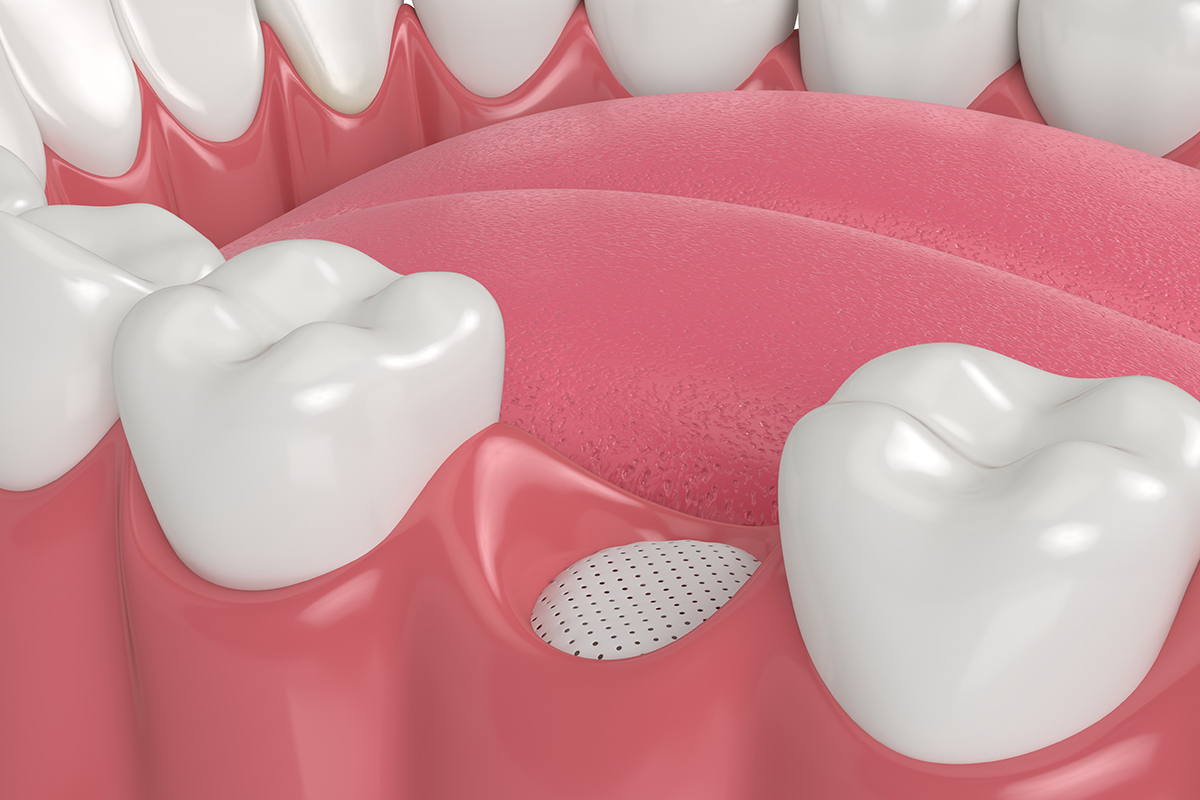Losing a tooth can be a concerning experience, affecting not only your smile but also your overall oral health. In many situations where a tooth is at risk due to bone loss, patients often wonder what options are available to save it. Bone grafting is a highly effective and common procedure in modern dentistry that can play a crucial role in preserving your natural teeth. By rebuilding and strengthening the jawbone, this procedure provides the necessary foundation to support your teeth and prevent further complications.
At our practice, we often see patients who are unaware that bone loss is the underlying cause of their dental issues. Often caused by periodontal disease a weakened jawbone can lead to tooth mobility and eventual loss. Bone grafting addresses this problem at its source. It is a predictable and safe surgical procedure designed to replace lost bone, creating a stable environment for your teeth and setting the stage for long-term oral health.
How Does Bone Grafting Work?
The primary goal is to stimulate your body’s natural ability to regenerate bone tissue in an area where it has been lost. To do this, we place specialized grafting material into the deficient site. This material acts as a scaffold, creating a framework that encourages your own bone cells to grow and multiply. Over time, your body naturally replaces the grafting material with new, healthy bone.
There are several types of bone grafting materials we can use, including bone from another part of your mouth, a human donor, an animal source, or synthetic materials. The choice of material depends on your specific needs, the extent of the bone loss, and the location of the procedure. We will carefully evaluate your situation to determine the most appropriate option for you. The procedure itself is typically performed with local anesthesia to ensure you are comfortable and pain-free. We also provide oral or iv sedation for improved comfort as needed.
The Benefits of Bone Grafting
The most significant benefit of bone grafting is its ability to save natural teeth that might otherwise be lost. By restoring the bone that supports the tooth roots, we can create a healthier, more stable foundation. This not only preserves your smile but also maintains proper bite function and alignment, preventing neighboring teeth from shifting out of place. A strong jawbone is essential for the longevity of your natural teeth.
Beyond saving existing teeth, bone grafting is also a critical step for patients who require dental implants. An implant needs a certain amount of bone to anchor it securely, and if significant bone loss has occurred, a graft is necessary to build up the site before implant placement. This ensures the implant will be stable and successful for years to come. Furthermore, restoring bone volume can improve the facial structure, preventing the sunken appearance that sometimes accompanies tooth and bone loss.
Who Might Need Bone Grafting?
Several conditions can lead to the need for a bone graft. The most common cause of bone loss is periodontal (gum) disease, an infection that destroys the supporting tissues and bone around the teeth. If left untreated, it can lead to severe bone deterioration. Patients who have had a tooth extracted are also candidates..
Other individuals who may require a bone graft include those who have experienced a traumatic injury to the jaw or face, leading to bone damage. Certain developmental defects or complications from previous surgeries can also create bone deficiencies that need to be addressed. During your consultation, we will perform a thorough examination, including advanced imaging, to assess the health of your jawbone and determine if bone grafting is the right solution to protect your smile.
A Foundation for a Healthy Smile
Ultimately, bone grafting is a restorative procedure that provides a solid foundation for your oral health. By regenerating lost bone, it can successfully save teeth from extraction, support dental implants, and preserve the natural contours of your face. It is a reliable and proven treatment that helps ensure your smile remains healthy and functional for a lifetime. If you are experiencing issues related to bone loss, we can help you understand your options and develop a personalized treatment plan.
Frequently Asked Questions About Bone Grafting
Is the bone grafting procedure painful?
We perform bone grafting procedures using local anesthesia, so you will not feel any pain during the treatment itself. It is normal to experience some discomfort, swelling, and minor bruising in the days following the surgery. We will provide you with specific post-operative care instructions and may recommend over-the-counter pain relievers to help you manage any soreness and ensure your recovery is as comfortable as possible.
How long does it take for a bone graft to heal?
The healing process for a bone graft varies from person to person, depending on the type of graft and the individual’s ability to heal. Generally, it takes several months for the graft to fully integrate with your natural bone. While initial healing of the gum tissue happens within a couple of weeks, the underlying bone regeneration is a gradual process. We will monitor your progress closely through follow-up appointments to ensure everything is healing correctly.
At Schrott Perio Implants, we are dedicated to providing comprehensive periodontal and dental implant care to patients in the greater Boston area. Our team is committed to delivering expert treatment in a welcoming and supportive environment. To learn more or to schedule a consultation, please contact us today.

